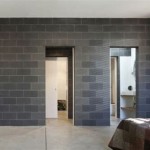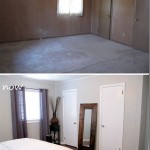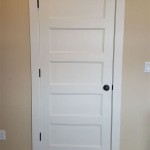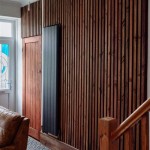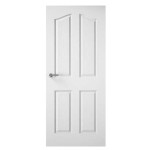How To Interior Design Your Bedroom: A Comprehensive Guide
Interior design of a bedroom is a deeply personal endeavor, reflecting individual tastes, needs, and lifestyle. It encompasses more than just aesthetics; it's about creating a functional and comfortable space that promotes relaxation and rest. Successfully designing a bedroom requires careful consideration of various elements, from space planning and color palettes to furniture selection and lighting.
This article provides a comprehensive guide to interior design principles specifically tailored for bedrooms, offering practical advice and strategies to transform your space into a sanctuary.
Key Point 1: Planning and Space Optimization
Before embarking on any physical changes, meticulous planning is crucial. This initial phase involves assessing the existing space, identifying its strengths and weaknesses, and defining the desired outcome. Consider the room's dimensions, architectural features (windows, doors, built-ins), and existing furniture if any needs to be retained.
Measuring and Mapping:
Begin by accurately measuring the bedroom's length, width, and ceiling height. Create a floor plan, either manually or using online tools, to visualize the room's layout. Mark the positions of windows, doors, electrical outlets, and any other permanent fixtures. This detailed map will serve as the foundation for furniture placement and design decisions.Functionality Assessment:
Determine the primary functions the bedroom will serve. Is it primarily a sleeping space, or will it also incorporate a workspace, reading nook, or dressing area? Understanding the room's intended purpose will guide the selection and placement of furniture.Traffic Flow:
Consider the natural pathways through the room. Furniture placement should facilitate easy movement and avoid creating obstacles. Aim for unobstructed access to the bed, closets, and other essential areas.Prioritizing Needs:
List essential furniture items, such as a bed, nightstands, and dresser. Then, identify secondary items based on available space and personal preferences, such as a desk, armchair, or vanity. Prioritize these elements to ensure the most important needs are met.Space-Saving Solutions:
In smaller bedrooms, maximizing space is paramount. Consider using vertical storage solutions, such as tall bookshelves or wall-mounted cabinets. Opt for furniture with built-in storage, such as a bed frame with drawers or a storage ottoman. Wall-mounted lighting fixtures can also free up valuable surface space on nightstands.Creating Zones:
In larger bedrooms, delineate different zones for specific activities. A rug can define a seating area, while a screen or room divider can create a sense of privacy for a dressing area or workspace. Zoning helps to organize the space and create a more functional and visually appealing layout.Key Point 2: Color Palette and Material Selection
The color palette is a foundational element of bedroom design, significantly influencing the room's atmosphere and overall aesthetic. Color psychology suggests that certain colors evoke specific emotions, making it imperative to choose colors that promote relaxation and tranquility in a bedroom.
Understanding Color Theory:
Familiarize yourself with basic color theory principles, including the color wheel, complementary colors, analogous colors, and monochromatic schemes. This knowledge will aid in selecting colors that harmonize and create a visually pleasing environment.Choosing a Base Color:
Select a dominant color for the walls. Neutral colors, such as soft whites, grays, and beiges, are popular choices for bedrooms due to their calming and versatile nature. These colors provide a blank canvas that allows for greater flexibility in decorating with furniture and accessories.Accent Colors:
Introduce accent colors through bedding, curtains, rugs, and decorative accessories. These colors should complement the base color and add visual interest to the room. Consider using warmer tones, such as soft yellows, oranges, or pinks, to create a cozy and inviting atmosphere. Cooler tones, such as blues, greens, and purples, can promote relaxation and serenity.Material Texture and Pattern:
Material selection is equally important in conveying the desired aesthetic. Incorporate a variety of textures to add depth and visual interest to the room. Soft fabrics, such as velvet, linen, and cotton, can create a sense of comfort and luxury.Flooring Considerations:
Flooring plays a significant role in the overall ambiance of the room. Carpeting adds warmth and softness underfoot, while hardwood or laminate flooring offers durability and a more modern aesthetic. Area rugs can be used to define specific zones and add visual interest.Lighting Impact on Color:
Consider how natural and artificial lighting will affect the appearance of the chosen colors. Colors tend to appear warmer under incandescent lighting and cooler under fluorescent lighting. Always test paint swatches in the room under different lighting conditions before making a final decision.Balancing Warm and Cool Tones:
Strive for a balance between warm and cool tones to create a harmonious and inviting space. Too much of one color can feel overwhelming or sterile. Incorporate both warm and cool elements to create a visually balanced and comfortable environment.Key Point 3: Furniture Selection and Arrangement
The furniture in a bedroom should be both functional and aesthetically pleasing, contributing to the overall design and comfort of the space. Consider the size and style of the furniture in relation to the room's dimensions and the desired aesthetic.
Bed Placement:
The bed is typically the focal point of the bedroom. Ideally, position the bed against a wall that is not directly opposite the door to create a sense of security and privacy. Consider the view from the bed; ideally, it should be pleasant and relaxing.Nightstands and Bedside Tables:
Nightstands provide essential storage and surface space for bedside lamps, books, and other necessities. Choose nightstands that are proportional to the bed's height and width. Consider incorporating drawers or shelves for additional storage.Dresser and Storage Solutions:
The dresser is a crucial storage component in most bedrooms. Choose a dresser that meets your storage needs and complements the overall style of the room. Consider using a chest of drawers or a wardrobe if you require additional storage space.Seating Options:
If space allows, incorporate a seating area with an armchair or loveseat. This can create a cozy and inviting space for reading or relaxing. Consider adding a small side table and lamp to create a comfortable reading nook.Mirror Placement:
Mirrors can enhance the sense of space and light in a bedroom. Position a mirror strategically to reflect natural light and create the illusion of a larger room. Consider using a full-length mirror on a closet door or wall to provide a convenient dressing area.Scale and Proportion:
Pay attention to the scale and proportion of the furniture in relation to the room's dimensions. Avoid overcrowding the room with oversized furniture, as this can make the space feel cramped and uncomfortable. Choose furniture that is appropriately sized for the room's dimensions.Style Consistency:
Maintain consistency in the style of the furniture to create a cohesive and harmonious look. Choose furniture that complements the overall design aesthetic, whether it is modern, traditional, bohemian, or eclectic. Mixing styles can be effective, but it requires a careful and deliberate approach.Key Point 4: Lighting and Ambiance
Lighting plays a critical role in setting the mood and creating the desired ambiance in a bedroom. A well-lit bedroom should incorporate a combination of natural light, ambient lighting, task lighting, and accent lighting.
Maximizing Natural Light:
Maximize the amount of natural light entering the room by keeping windows clean and unobstructed. Use sheer curtains or blinds to filter the light and provide privacy. Consider adding a mirror to reflect natural light and brighten the space.Ambient Lighting:
Ambient lighting provides overall illumination for the room. This can be achieved through recessed lighting, a ceiling fixture, or floor lamps. Choose a fixture that complements the room's style and provides adequate light for general activities.Task Lighting:
Task lighting provides focused illumination for specific activities, such as reading, writing, or applying makeup. Bedside lamps are essential for reading in bed, while a desk lamp provides focused light for working or studying. Consider using adjustable lamps to customize the light level and direction.Accent Lighting:
Accent lighting highlights specific features or areas of the room, adding visual interest and creating a sense of drama. This can be achieved through spotlights, track lighting, or decorative lamps. Consider using accent lighting to highlight artwork, architectural details, or a seating area.Dimmer Switches:
Install dimmer switches on ambient and task lighting fixtures to adjust the light level and create different moods. Dimmer switches allow you to create a cozy and relaxing atmosphere for sleeping or a brighter and more energizing atmosphere for daytime activities.Color Temperature:
Consider the color temperature of the light bulbs used in the bedroom. Warm-toned light bulbs (2700K-3000K) create a cozy and inviting atmosphere, while cool-toned light bulbs (4000K-5000K) provide brighter and more energizing light. Choose light bulbs that complement the room's color palette and the desired ambiance.Layering Light:
Layering different types of lighting is essential for creating a well-lit and versatile bedroom. Combine ambient, task, and accent lighting to create a balanced and visually appealing lighting scheme. Experiment with different lighting arrangements to find the perfect balance for your needs and preferences.Key Point 5: Personalization and Finishing Touches
The final step in designing a bedroom is adding personal touches that reflect individual style and create a welcoming and comfortable space. These finishing touches include bedding, window treatments, artwork, accessories, and plants.
Bedding Ensemble:
The bedding ensemble is a key element of bedroom design. Choose bedding that is comfortable, stylish, and complements the room's color palette. Consider using a duvet cover, comforter, or quilt, along with coordinating sheets, pillowcases, and throw pillows.Window Treatments:
Window treatments provide privacy, block out light, and add visual interest to the room. Choose curtains, blinds, or shades that complement the room's style and provide the desired level of light control. Consider using layered window treatments, such as sheer curtains with blackout drapes, to provide both privacy and light control.Artwork and Wall Decor:
Artwork and wall decor add personality and visual interest to the room. Choose pieces that reflect your personal taste and complement the room's style. Consider using framed prints, paintings, photographs, or sculptural wall art.Accessories and Decorative Objects:
Accessories and decorative objects add the finishing touches to the room. Choose items that are both functional and aesthetically pleasing, such as vases, candles, books, and decorative bowls. Arrange these items strategically to create a visually appealing and inviting space.Plants and Greenery:
Plants and greenery add life and vibrancy to the room. Choose plants that are easy to care for and thrive in indoor conditions. Consider using potted plants, hanging plants, or a small indoor garden.Creating a Sensory Experience:
Consider the sensory experience of the room. Incorporate elements that appeal to the senses, such as soft textures, soothing scents, and calming sounds. Use essential oil diffusers, candles, or a sound machine to create a relaxing and peaceful atmosphere.Decluttering and Organization:
Finally, declutter and organize the room to create a clean and inviting space. Remove any unnecessary items and organize belongings to minimize clutter. A well-organized bedroom promotes relaxation and reduces stress.:max_bytes(150000):strip_icc()/kendallwilkinson-29884cbad37a46e89d84d3d3483a8b23.png?strip=all)
How To Decorate A Bedroom

How Should I Decorate My Bedroom Colorado Style Home Furnishings

Design My Own Room With The Help Of Interior Designer

Design My Own Room With The Help Of Interior Designer

How To Design A Room Like An Interior Designer Step By Greenhouse Studio
Interior Designer Shares How To Maximize Space In Bedroom Business Insider

30 Stylish Bedroom Wall Decor Ideas And Tips

Small Bedroom Ideas To Maximise Space And Style By Livspace

Bedroom Design Interior Designs Designcafe

60 Diy Bedroom Makeover Ideas
Related Posts


